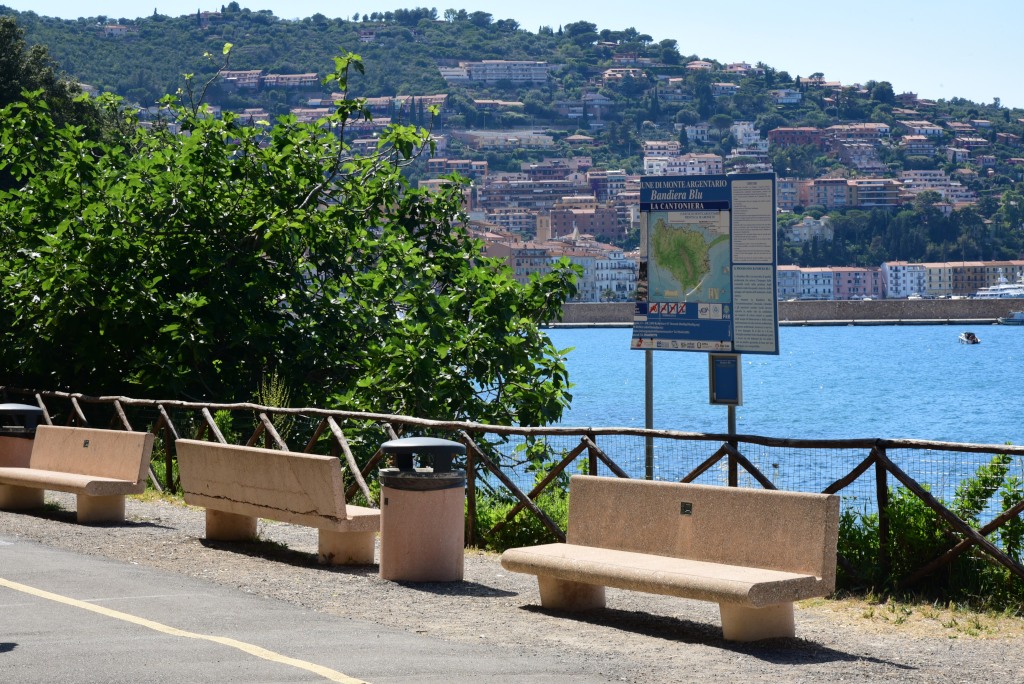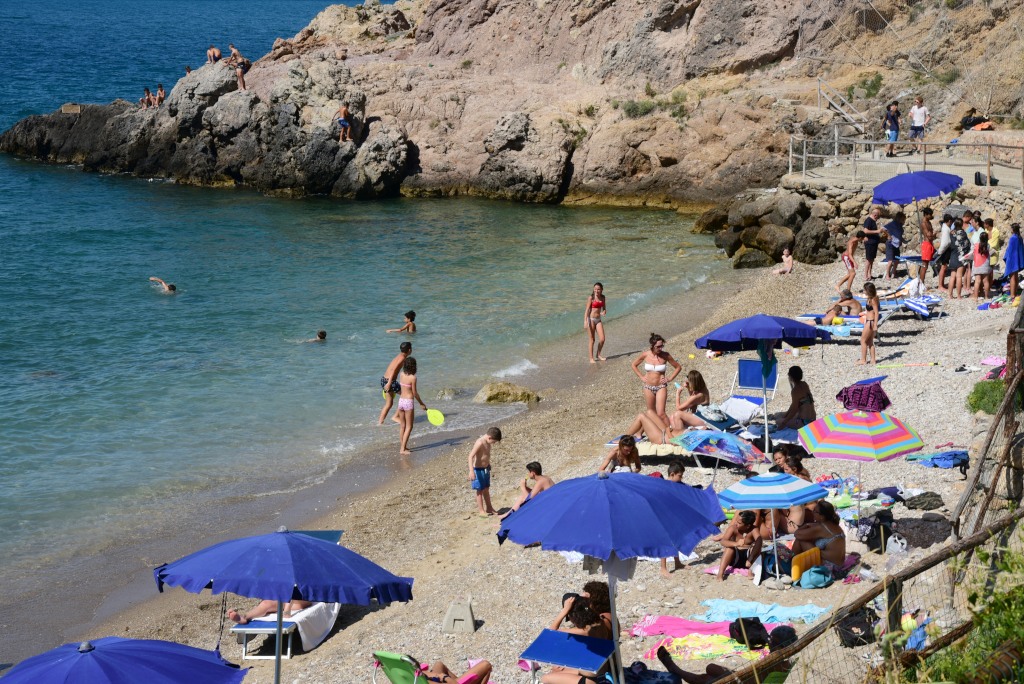June 6, 2018
The road to Porto Santo Stefano weaves along the north face of the Monte Argentario peninsula. En route, there are many small and intimate beaches, not necessarily with the best sand, and somewhat on the rocky side. Porto Santo Stefano is the largest town on the north side of the Monte Argentario peninsula of Tuscany.
The palm tree-laden waterfront promenade designed by Giorgetto Giugiuaro offers an alluring introduction to the town, which rises up through the sunwashed streets and passageways to the fort. The town features an attractive aquarium of Argentario, as well as ferries to the dramatic rocky islets.
Monte Argentario was inhabited by Etruscans, and became the meeting place for trade between the ancient seafaring communities. Under the Romans, trade increased and due to the area’s beauty, three great villas were built at the time on the promontory. Under Emperor Trajan, Monte Argentario was known as Insula Matidiae and was probably changed to Argentarius by Roman banker family of Domizi Enobarbi.
During the Middle Ages, the peninsula belonged to the Abbey of Tre Fontane of Rome and later succumbed to the feud between Aldobrandeschi and Orsini families, so that the commune of Siena ultimately took over the area. In the mid-16th century, in the aftermath of the French-Spanish wars, Monte Argentario was assigned to the Reali Presidi di Spagna. A large investment in powerful defensive fortifications was made, culminating on a series of observation towers.
At the end of the Spanish domain, the peninsula came under the control of Austria, Kingdom of the Two Sicilies, and at the beginning of 19th century, Napoleonic France. In 1815, the Vienna Congress assigned Monte Argentario to the Gran Duchy of Lorraine, and in 1860, was annexed into the Kingdom of Italy.
(narrative excerpted from www.monteargentario.info)

























































